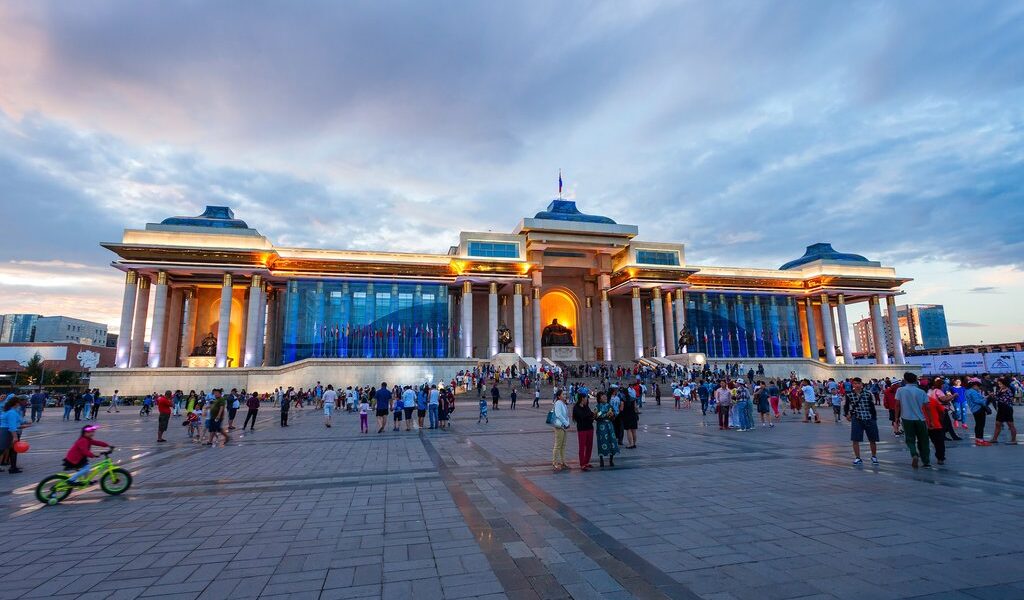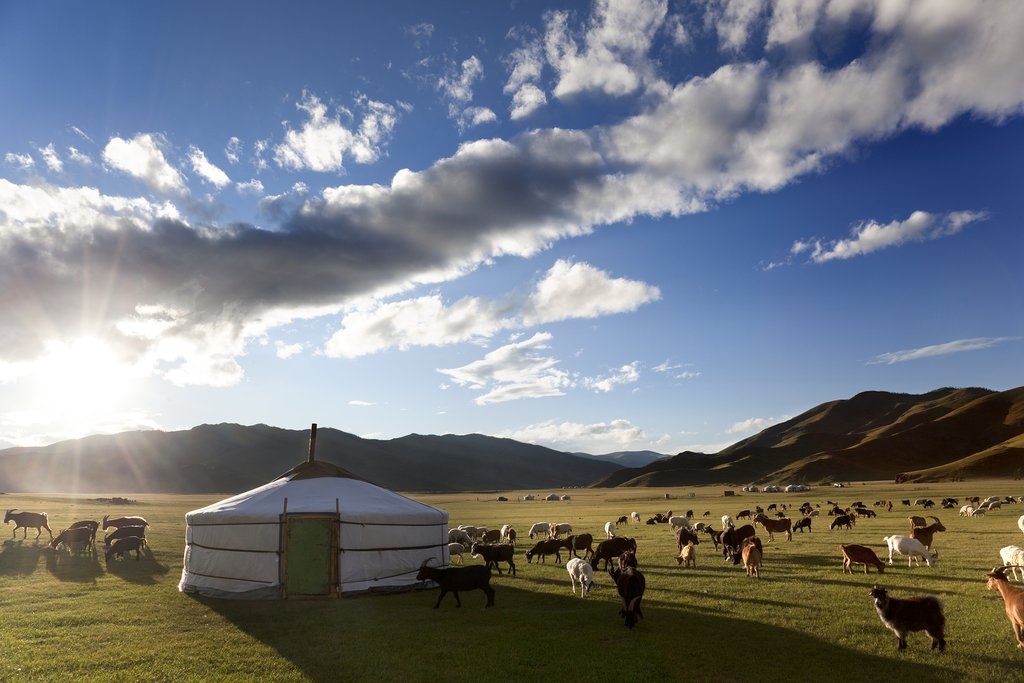
Mongolia ranks high on the bucket list for adventurous travelers in search of Earth’s last untouched landscapes. The following is a list of top destinations to tick off while visiting the stomping grounds of Ghengis Khan.
Overview
Embarking on an overland tour represents the quintessential approach to fully appreciate the multifaceted splendor of Mongolia. This is particularly relevant given the extremely limited public transportation options available in the country’s more remote regions. Typically, these overland journeys involve traversing the landscape in robust 4×4 vehicles, accompanied by both a knowledgeable guide and a skilled driver. Accommodation often alternates between nights spent camping beneath the vast, starlit Mongolian sky and stays at traditional ger camps – these are authentically crafted nomadic tents, meticulously adapted to cater to the needs and expectations of tourists. A minimum of one week is generally recommended to adequately explore the captivating capital city and venture out to a selection of the most compelling countryside destinations. Opting for domestic flights can be a strategic way to reclaim a day or two that would otherwise be consumed by long hours on the road. However, it is crucial to avoid over-packing your itinerary, as the challenging travel conditions inherent in exploring Mongolia can place considerable strain on even the most seasoned and experienced globetrotters. Careful planning and a realistic understanding of the distances involved are key to ensuring a truly enriching and enjoyable Mongolian adventure.
Ulaanbaatar
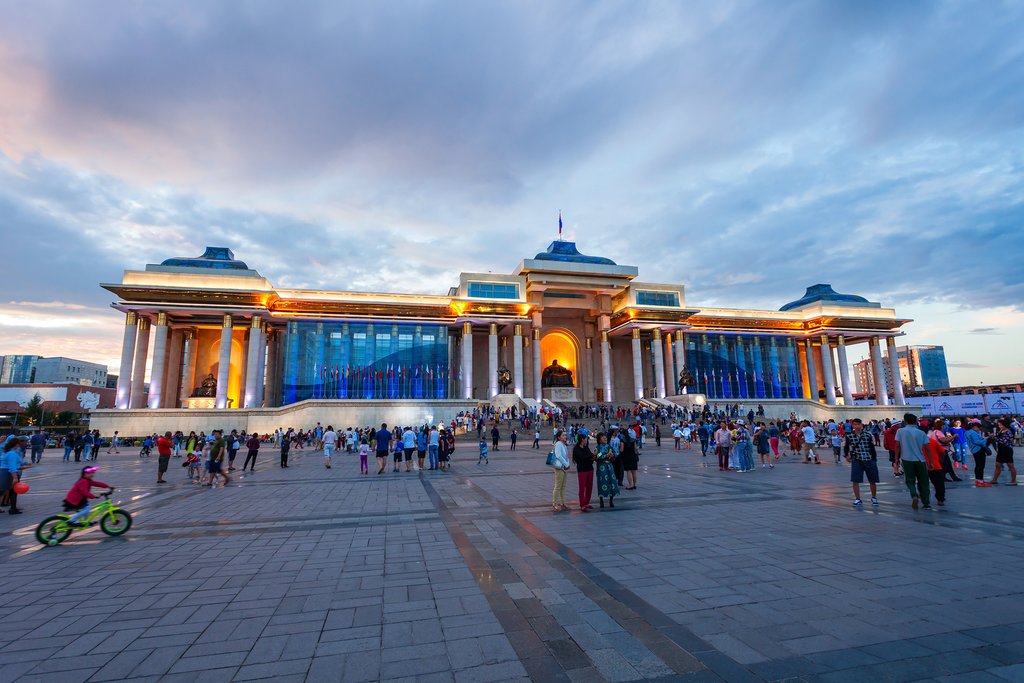
As the nucleus of Mongolia, Ulaanbaatar, frequently abbreviated as UB, is home to nearly half of the entire national population. It serves as the undisputed cultural, educational, and economic center of the nation. The city’s contemporary skyline, punctuated by sleek glass towers and rapidly expanding suburban apartment complexes, stands as a powerful visual testament to the ongoing mining boom that is significantly propelling Mongolia’s impressive economic growth. The juxtaposition of traditional Mongolian elements with modern architectural designs provides a unique and compelling urban landscape, reflective of the country’s dynamic development.
The city boasts an array of exceptional museums and noteworthy historical sites, many of which are conveniently located within easy walking distance of the centrally positioned Sükhbaatar Square. A definite highlight is the Gandan Monastery, a prominent Buddhist center where hundreds of monks congregate each morning to engage in traditional prayer rituals. Another unmissable landmark is the historic Bogd Khan Winter Palace, the former residence of Mongolia’s last monarch. This palace offers a fascinating glimpse into the past, with exhibits showcasing the monarch’s eclectic collections, including, famously, an elephant and a mansion brimming with exotic stuffed wildlife. Furthermore, a visit to the National History Museum is highly recommended, providing an insightful overview of Mongolia’s rich and complex history. The museum notably features a display of weaponry used by the formidable armies of Ghengis Khan, offering a tangible connection to the country’s imperial past.
Beyond its historical and cultural attractions, Ulaanbaatar also presents a surprisingly vibrant and diverse nightlife scene, characterized by a selection of high-quality local theaters, a wide range of restaurants catering to diverse tastes, cozy pubs, lively music venues, and energetic nightclubs. For those seeking a more relaxed and tranquil evening, a trip south of the city to the neighborhood of Zaisan is highly recommended. This pleasant area is characterized by its poignant war memorials, serene Buddha statues, and numerous restaurants where patrons can enjoy dining al fresco, taking in the surrounding atmosphere. For active travelers seeking outdoor adventures, a trekking expedition from Zaisan over the Bogd Khan Mountain to Manzhir Monastery presents a challenging yet rewarding option, typically involving a seven-hour hike through stunning natural landscapes. This hike provides both physical exercise and the opportunity to connect with the spiritual heritage of the region.
Bayan Ölgii
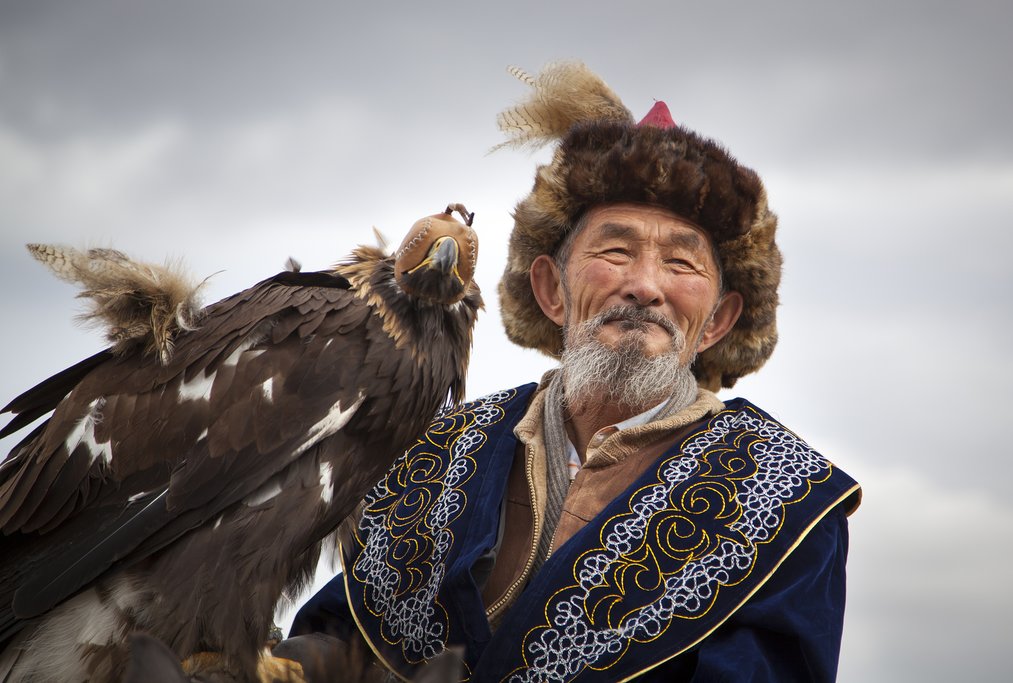
Bayan Ölgii, the westernmost province of Mongolia, is unique in that the majority of its population is composed of Kazakhs. This region boasts a breathtaking and varied landscape, characterized by magnificent glaciers, imposing jagged peaks, and striking colored deserts, offering a visually stunning panorama. The provincial capital, simply named Ölgii, features a bustling and cheerful market, serving as an ideal base from which to launch expeditions into the surrounding wilderness. The market provides an opportunity to immerse oneself in the local culture and acquire essential supplies before venturing into the remote landscapes of the region.
The Kazakh people are widely renowned for their exceptional skills in falconry, a traditional art form passed down through generations. Many Kazakhs devote their leisure time to hunting with majestic golden eagles, forming a unique and profound relationship with these powerful birds of prey. Eagle hunting is typically practiced during the colder months of the year, making October and November the optimal period for those keen on witnessing or experiencing this remarkable cultural activity. Observing an eagle hunter and his golden eagle in action is an unforgettable experience, offering a glimpse into a time-honored tradition and the deep connection between humans and nature.
For adventurous travelers, climbing expeditions in Tavan Bogd National Park can be organized, with the ultimate goal of reaching the summit of Nairamdal Peak, standing at an impressive altitude of 4374 meters. Mountain biking and trekking are additional popular activities in the region, providing opportunities to explore the diverse landscapes and discover hidden gems. When venturing through the region, be sure to keep an eye out for ancient burial mounds and intricate rock carvings, providing tangible links to the area’s rich and ancient history. The stunning lakes situated in the southern part of the park are an absolute must-see, framed by imposing snow-capped mountains and picturesque grassy shorelines, creating postcard-perfect scenes. These pristine lakes offer opportunities for relaxation, reflection, and immersion in the breathtaking natural beauty of Bayan Ölgii.
Chat with a local specialist who can help organize your trip.
Lake Khövsgöl
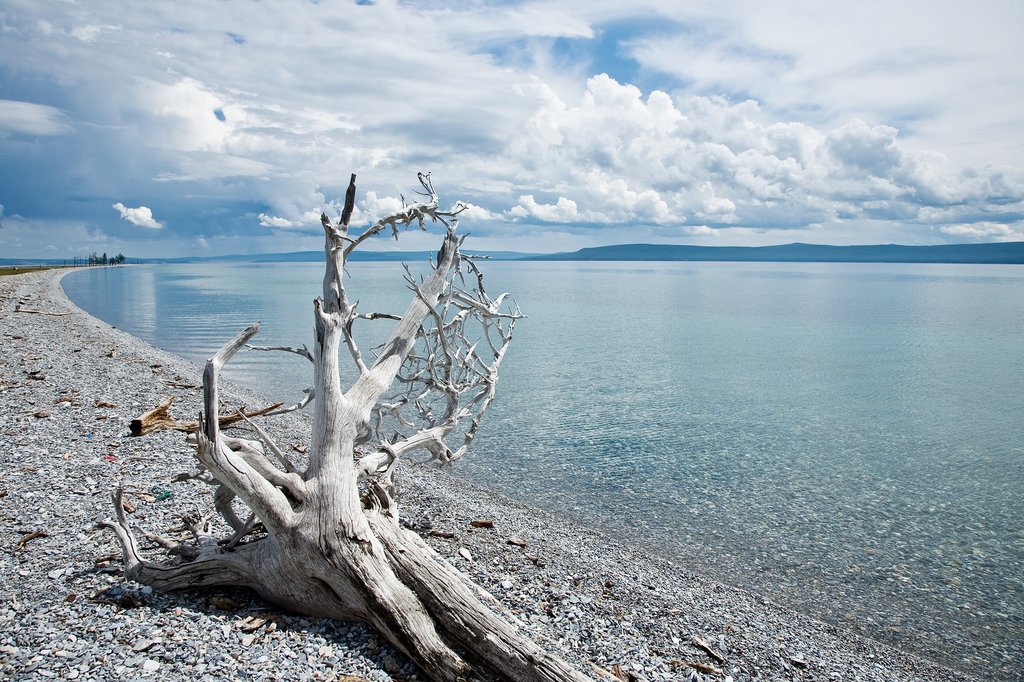
Lake Khövsgöl, a stunning body of water that extends into the southern reaches of Siberia, holds an impressive two percent of the world’s total freshwater reserves. With its crystal-clear waters and breathtaking surroundings, it is the quintessential destination for those seeking tranquility and relaxation. Spending a few days at a ger camp along the lakeshore offers an immersive cultural experience, while setting up one’s own tent provides a more intimate connection with nature. Opportunities for various activities abound, including fishing in the pristine waters, leisurely boating excursions, horseback riding along the scenic shores, and invigorating swimming experiences. For hikers and trekkers, a journey over the Mönkh Saridag Mountains to the Darkhad Valley promises adventure and discovery. The Darkhad Valley is not only a place of stunning natural beauty but also the ancestral home to powerful Shamans and a unique tribe of reindeer herders, offering a fascinating glimpse into the region’s spiritual and cultural heritage.
Throughout the year, the lakeshore becomes the stage for a variety of captivating events and activities. During the winter months, the celebrated ice festival takes place, featuring a range of exciting winter games and competitions on the frozen surface of the lake. In the summer, the highlight is the Sunrise to Sunset event – an ultramarathon spanning 100 kilometers, alongside a standard marathon covering 42 kilometers. These events draw participants from across the globe, creating a vibrant and energetic atmosphere. Furthermore, the quaint village of Khatgal, characterized by its charming log cabins and located near the southern end of the lake, plays host to a delightful Naadam festival on July 11-12. This traditional festival showcases Mongolian culture through wrestling, horse racing, and archery, providing a vibrant and unforgettable experience for visitors.
Eastern Mongolia

A comprehensive tour of eastern Mongolia typically commences in Khentii province, the historical homeland of the legendary Ghengis Khan. Here, the rugged jeep tracks wind their way past ancient carved stones and historic monasteries, providing a tangible connection to the region’s rich and complex past. Dadal, a tranquil village characterized by its charming log cabins, offers a peaceful respite along the route and hosts a popular summer Naadam festival, providing a vibrant display of Mongolian culture. The area is also known for its rushing rivers, where anglers can try their luck at hooking a prized taiman, the world’s largest salmonoid, adding an element of excitement and adventure to the journey.
Venturing further east into Dornod province, visitors can discover poignant war memorials scattered across the vast plains at Khalkh Gol, serving as reminders of past conflicts and sacrifices. The surrounding areas are home to massive herds of galloping gazelle, a truly awe-inspiring sight representing one of Asia’s greatest animal migrations. Taking the time to stop the vehicle periodically and wander off into the seemingly endless steppe offers a profound connection with the natural world, allowing one to fully appreciate the vast expanse where the sea of grass merges seamlessly with the boundless blue sky.
Another compelling reason to pause the journey is to visit with nomadic families, where traditional Mongolian hospitality is freely extended through the sharing of tea and engaging in friendly conversation. Spending time inside a traditional nomad tent provides an invaluable opportunity to gain a deeper understanding of the everyday life and unique perspectives of the Mongolian people, fostering cultural exchange and creating lasting memories.
Karakorum and Orkhon Valley
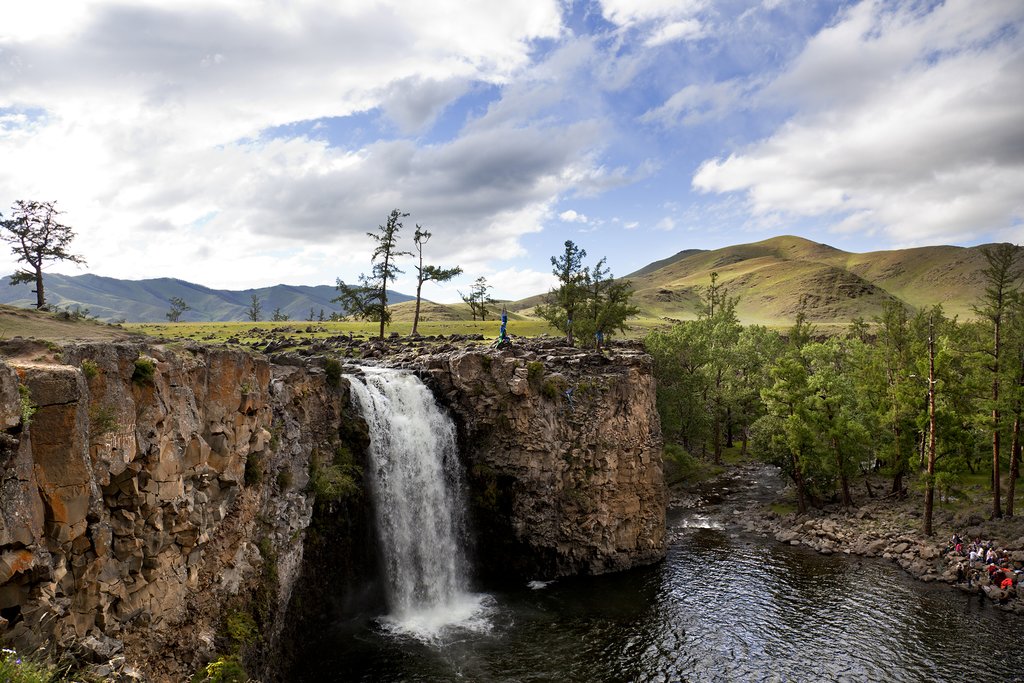
Central Mongolia offers expansive plains and scattered gers, presenting a panorama that likely mirrors the very view beheld by Ögödei Khan when he established his power base in this region some 750 years ago. The undisputed historical gem of the area is Erdene Zuu Monastery, widely recognized as the oldest Buddhist monastery in Mongolia. Situated nearby are the intriguing ruins of Karakorum, the ancient capital of the vast Mongol empire. Although little remains of Karakorum itself, the bricks from the ancient city were repurposed to construct the impressive 108 stupas that now encircle Erdene Zuu Monastery, symbolizing the enduring legacy of the Mongol empire.
Traveling west of Karakorum, visitors traverse the picturesque Orkhon river valley, a region renowned for its stunning natural beauty and historical significance. A highlight of this area is the Ulaan Tsutgalan waterfall, a magnificent cascade plunging from a height of 20 meters. Nearby sits Tövkhön Monastery, a historic hermitage once utilized by the renowned sculptor Zanabazar. The Orkhon valley provides excellent opportunities for camping, allowing visitors to immerse themselves in the serene surroundings and observe herds of sheep, goat, yak, horse, and cattle grazing freely. In addition to its historical and natural attractions, the region also boasts hot springs, tranquil lakes, and a charming provincial capital in Arkhangai, collectively enhancing the allure of a visit to this captivating region.
The Gobi
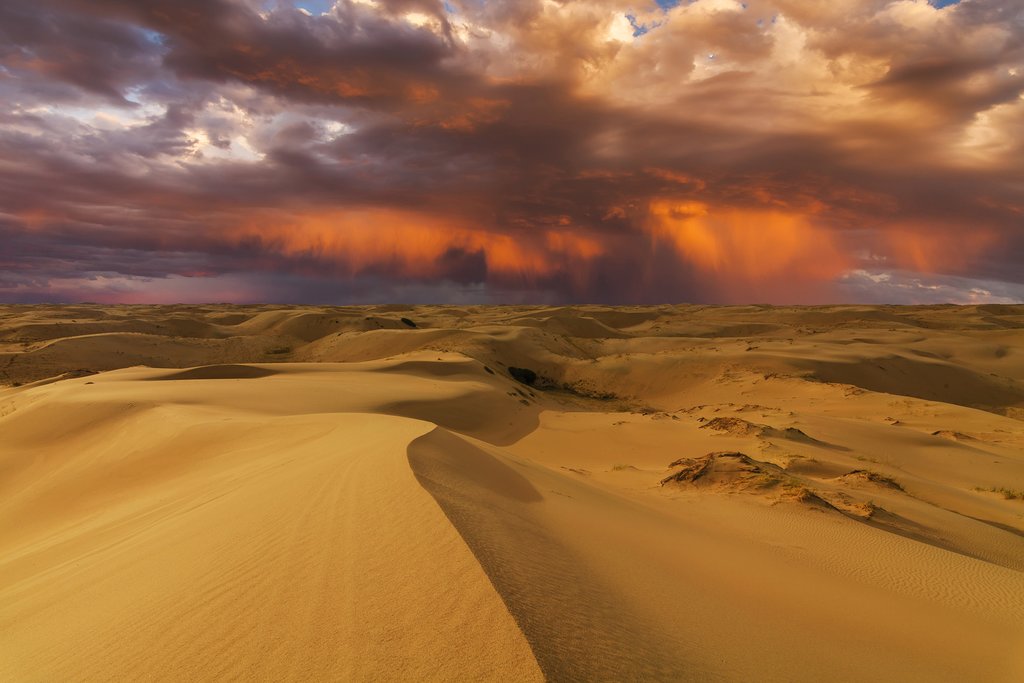
The vast and formidable Gobi Desert presents a diverse landscape characterized by scattered mountains and towering sand dunes, interspersed with seemingly endless plains of nothingness and occasional pink canyons that conceal the fossilized remains of dinosaurs. This stark yet beautiful environment is home to the hardy Gobi people, who are primarily camel breeders and often extend their hospitality by proudly showcasing their magnificent beasts to visiting travelers. The Gobi Desert offers a unique blend of natural beauty, cultural encounters, and historical significance.
Within the desert landscape are several noteworthy monasteries, including the mystical Khamaryn Khiid located near the town of Sainshand. This monastery is strategically positioned near a powerful energy center, attracting visitors from across the country seeking its purported healing powers. The remote Khongoriin Els, also known as the Singing Sand Dunes, produce a distinctive humming sound when whipped by the strong desert winds, offering a unique auditory experience. For those equipped with a simple square of cardboard, the dunes provide a thrilling opportunity for dune surfing, adding an element of adventure and excitement to a visit to the Gobi Desert. The combination of spiritual sites, unique natural phenomena, and adventurous activities makes the Gobi an unforgettable destination.
B-1587

